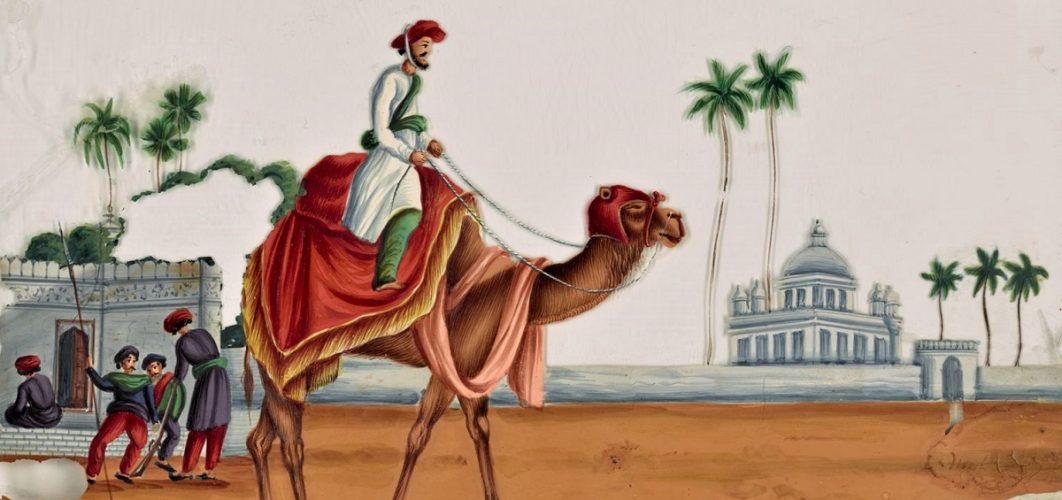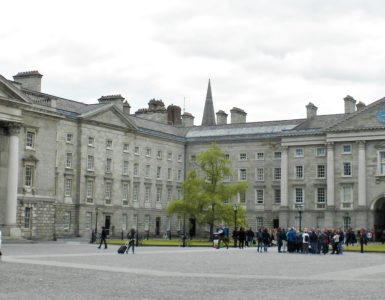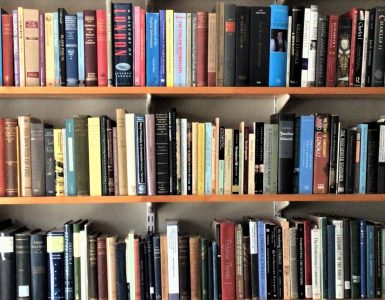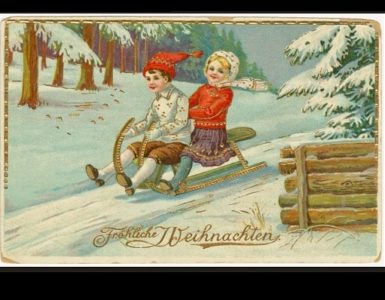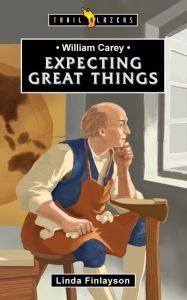 Today, 188 years ago, British missionary William Carey died in Serampore ending a ministry of 40 years to the people of Bengal in India. Linda Finlayson’s William Carey: Expecting Great Things, 2022, is a selection in the Trail Blazers series printed by Christian Focus Publications in Scotland. Trail Blazers is written for readers ages 9 to 14 but this reviewer, who is some years older than the intended audience, found William Carey to be an engaging, informative, and well-written little book (125 pages). A contestant on a television game show who won nearly three-million dollars said that he studied by reading children’s books in the local library so he could provide the questions for the answers given on the game board.
Today, 188 years ago, British missionary William Carey died in Serampore ending a ministry of 40 years to the people of Bengal in India. Linda Finlayson’s William Carey: Expecting Great Things, 2022, is a selection in the Trail Blazers series printed by Christian Focus Publications in Scotland. Trail Blazers is written for readers ages 9 to 14 but this reviewer, who is some years older than the intended audience, found William Carey to be an engaging, informative, and well-written little book (125 pages). A contestant on a television game show who won nearly three-million dollars said that he studied by reading children’s books in the local library so he could provide the questions for the answers given on the game board.
William Carey was born in 1761 near Paulerspury, Northamptonshire, England, to his schoolmaster father Edmund and mother Elizabeth. One of his delights as a child was reading a copy of Daniel Defoe’s Robinson Crusoe that was given to him by his uncle. There was no money to further his formal education, so his father decided William should apprentice with a shoemaker, then known as a cobbler. It was not a trade Carey found attractive. The boy had a sharp mind and was interested in languages. He had learned Latin during his formal studies, and would learn the modern languages of Italian, French, and Dutch, as well as Hebrew in later years. For reasons unknown, his master had a copy of a Greek New Testament, which captured Carey’s interest prompting him to borrow it for study. He was one of those unique individuals that simply enjoys learning languages and this special ability would come in handy in later years. His fellow apprentice, John, was a Christian who took him to a dissenters’ church where he became a Christian. William wrestled with the doctrine of Baptism but found resolution in the Baptist practice and became a Baptist minister. The transition point for Carey’s ministry future was May 12, 1792 when he published An Enquiry into the Obligations of Christians, to Use Means for the Conversion of the Heathen, which pointed out that the Great Commission extended to the whole world. The publication influenced some readers to join with him and establish the Baptist Missionary Society that same year. Carey and his wife Dolly set out for India. It was a challenging transition as they settled into ministry in Bengal in the northeast part of India. The difficulties of missionary life were too much for Dolly and she suffered some type of mental illness for ten years before passing away in 1807. William would see a second wife die and then marry a third. He learned the Bengali language and then Sanskrit, which is a more ancient language in India, and translated the Bible and some Sanskrit manuscripts into Bengali. In addition to his work leading worship and teaching the Bible, Carey oversaw the mission as it established schools to teach the Bengalis botany, agriculture, astronomy, and medicine, as well as set up libraries and printing operations to provide educational materials. Serampore College established by the Baptist Missionary Society still exists today. He promoted social change to the caste system and helped the British to understand the Indians were not servants but people. One of the great setbacks faced was when the print shop where the Bengali Bible was published burned down and destroyed the entire text necessitating a complete rewrite. Other aspects of life in India that challenged the India mission were monsoon season, diseases such as cholera, and food shortages due to the limitations of available agricultural methods.
Despite the benefit of reading this book for adults, it was written for young readers. The author has included tools for teaching such as simple maps of England, India, and Bengal; a glossary defining unfamiliar words; a timeline of significant events for Carey intermingled with important general history events (i.e. the accession of Queen Victoria); a select bibliography; and a list of twelve topics for readers to mull over regarding their own lives and what they learned from the life of Carey. Whether it is an adult reading the book, or a young person reading it for pleasure, a home-schooling project, or a requirement for a local school, it is informative and will promote thought about the importance of missions and the sacrifices involved.
Accounts of Carey’s work influenced many missionaries after him including, possibly, American Presbyterian missionaries such as “The Lion of Punjab,” John Hunter Morrison; martyred missionaries to China John and Rebecca Peale; Augustus W. Loomis, whose brief work in China ended up with lengthy service to the Chinese in California; missionary to Tabriz, Persia (Iran), Samuel G. Wilson; the Greek national educated for the ministry in the United States, Michael D. Kalopothakes; and Rev. John N. Wright, whose wife Shushan from Koordistan was murdered in Persia.
Barry Waugh
Notes—The header shows a painting by an Indian artist. It was located in the New York Public Library Digital Collection. For an extensive biography of Cary see, The Life of William Carey, Shoemaker and Missionary, by George Smith, which is a reprint issued in an Everyman’s Library edition, 1922.


